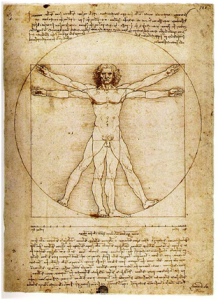The Mathematics in Art
Do you like mathematics? Well, when we were in school, many of us might have had some issues with it. However, you will be shocked when you realize how closely art and math are related. Continue reading to learn about this fascinating connection.
Have you ever heard about the Golden Ratio? Often known as the Divine Proportion, this is a real irrational constant in algebra with an approximate value of 1,618. This constant (as the name implies, something set, an opposition to the idea of variable) is represented by the Greek letter φ and is a tribute to an artist: the sculptor Phidias, who used this proportion to build one of the most famous architectural projects of Antiquity: The Parthenon.

One of the most famous pieces of art, known as the Mona Lisa, painted by Leonardo Da Vinci, is drawn according to the Golden Ratio. Throughout the painting, the Mona Lisa has many golden rectangles. Through drawing a circle around her face, we can see it’s golden too. When we split the rectangle with a line drawn over her eyes, we get another golden rectangle, which means that her eyes have a golden proportion of her head length. Certain golden rectangles can be drawn on the rest of her body, as from her neck to the top of her hands.
Da Vinci made other pieces which were often drawn according to the golden ratio including: The Last Supper, Old Man, and The Vitruvian Man. The Vitruvian Man (or Man in Action) is the illustration of a man depicted in a circle. The man’s height is in Golden Proportion from the top of his head to his navel, and from his navel to the bottom of his feet.

One of the painters who used mathematics in his designs was the Russian artist Wassily Kandinsky, best known for his abstract artworks and for being a teacher at the Bauhaus.

Kandinsky used many mathematical concepts in his most abstract works. Concentric circles, lines open and closed, triangles…
Geometry has been a particular element of interest to the artist. This was not unexpected, considering that the Bauhaus tried precisely to be a school of art and architecture that enlarged the concept of art and showed its many possibilities, the curiosity Kandinsky has in mathematical elements thus makes total sense.
The artist Piet Mondrian created some compositions around 1930, which gave rise to Neoplasticism, an avant-garde movement which sought to present a new image of art. Mondrian also used mathematical concepts in laying the foundations for neoplasticism to arrive at the conclusion.

To conclude, mathematics isn’t always evident in art, unless you discover it. But there’s plenty of symmetry, geometry, and calculation involved in creating beautiful art. Often, many artists benefit from mathematical observations, such as the golden ratio, to make their artwork realistic and breathtaking. Mathematics can also explain angles and perspective. Thus, there is a large amount of math involved in art.
Sources:

This project has been funded with support from the European Commission. This website and all its contents reflect the views only of the author, and the Commission cannot be held responsible for any use which may be made of the information contained therein.
[Project number: 2018-1-SE01-KA201-039031]





